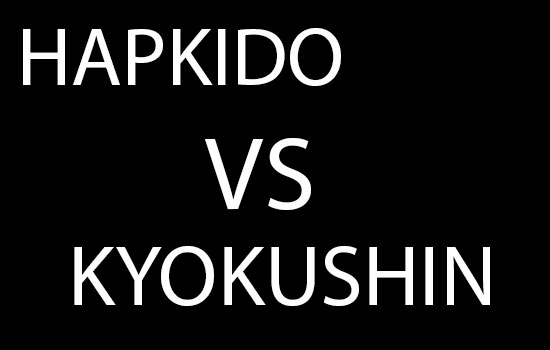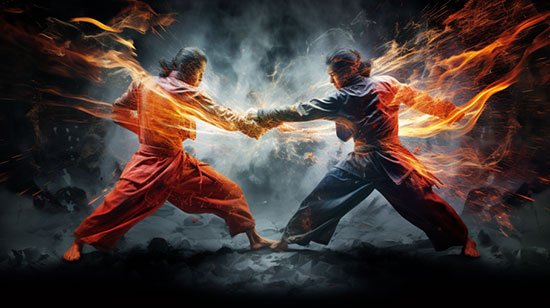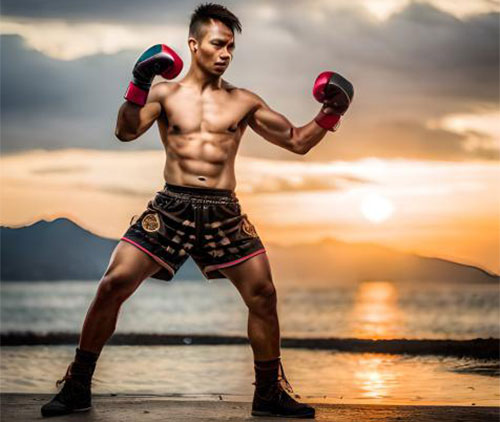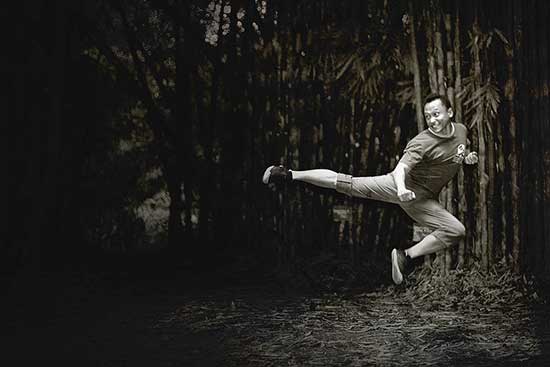Every martial art system has its own belt ranks, which are the levels of proficiency that one must meet before the next rank can be achieved. Kajukenbo is no different in this respect.
We’ve compiled an overview of the belts in Kajukenbo, as well as what some of them stand for and what they signify. But before that,
Contents
What is Kajukenbo
Kajukenbo is a blend of five traditional martial art fighting styles (or Kenpo) from 5 diverse black belt martial artists; Peter Y. Y. Choo, Frank Ordonez, Adriano Emperado, Joseph Holck, and Clarence Chang.
The goal was to create one ideal fighting style that incorporates the aspects of the different artists’ martial art achievements.
Kajukenbo differs in many aspects from the traditional styles, such as fight combinations and footwork.
The stances are different, the moves are somewhat different, and there is even a special stance that is unique to kajukenbo. The five Kenpo that were merged to create Kajukenbo are:
- Kenpo Karate
- Tang Soo Do
- Judo-Jujutsu
- Escrima (Kali)
- Chinese Kenpo Karate, also known as ba quan da (eight extreme fists) or pai kau (white crane, a Southern Shaolin fighting style characterized by its use of long-range hand strikes and kicks in combination with close-range trapping and throwing maneuvers).
Kajukenbo was first created in 1947. The unique blend of the five martial arts formed Kajukenbo. By adapting and adopting the best aspects of their different arts.
The Kajukenbo name was coined in 1953 by the late Jesse Glover. The five fighting Kenpo styles were combined to form one, but these different fighting styles can still be seen in the forms of Kajukenbo today.
All five fighting styles are respected and are represented by a belt rank.
Kajukenbo Belt Ranks and Their Meaning
There are six belt ranks in Kajukenbo: White Dan, Blue Dan, Red Dan, Purple Dan, Purple Upper Grade, and Black Dan.
Within each rank, the naming system varies between different systems and styles of Kajukenbo. The white and blue belts are for beginners, and the red, purple, and black dans are for intermediate students, who encompass the entirety of their training.
The Black Belt is for everyone else: experts whose training has reached the highest level of expertise. Tag along for their meanings.
1. White Belt
This is a student’s first level of training, where they learn basic stances and techniques. Students must have a certain level of expertise before progressing to the Blue Belt.
2. Blue Belt
This belt is for those students who have completed the White Belt and are looking to learn more of their kajukenbo base of knowledge.
Students will learn the basics that make up their Kaju defense system. They will also begin to learn some basic throws, which they may use in their sparring sessions with fellow students.
3. Red Belt
In this belt, you’ll continue to learn more of the basics but with more intricate movements. Students will learn new strikes and even learn how to use weapons.
The Red Belt is typically the level where students begin learning how to adapt their kajukenbo defense style to different kinds of attacks.
4. Purple Belt
This level is where students start learning more advanced maneuvers in Kajukenbo. They will learn how to use their kajukenbo defense system against a variety of attacks.
They will also begin to learn new attacks that they may use in sparring matches with their fellow students.
There are also two levels of the purple belt, a Purple Upper Grade and a Black Belt. The UPG is the first belt rank at the highest level of achievement in training, but only around half of those who aspire to reach the Black Belt will achieve UPG.
5. Brown Belt
Brown belts learn more advanced kajukenbo moves and techniques that are more advanced than their counterparts at each previous level. They will learn new attacks and a variety of defenses and even start to study weapons.
6. Black Belt
This is the highest rank a student can reach in Kajukenbo. Students must be an expert in kajukenbo first and foremost but must also assume leadership in their group of friends or followers.
Once a Black Belt has been achieved, their name will be called out by their instructor during sparring matches to show they are taking control of the situation.
Conclusion
In order to become a Blackbelt in Kajukenbo, a student must train long and hard with the teacher. The student begins by learning what the art is all about, then learns some of the basics that are unique to Kajukenbo.
After this, the student starts learning new techniques and is trained in the movements. The next belt level to become a Blackbelt is known as Brown Belt (1st Dan). It takes much discipline to attain a Black Belt. So, get ready!





